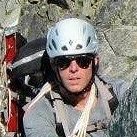-
Posts
4372 -
Joined
-
Last visited
-
Days Won
24
Posts posted by DPS
-
-
just curious how long is the couloir (feet or meters) and how long did it take to climb it?
I estimate the couloir is 1200 feet. When Paco and I did it last year we did it in 7 full 60 meter pitches. We spent maybe 6 hours in the couloir. We had very icy conditions.
-
When I gave it a go I was down to about 47lbs
Down to 47 lbs? What were you carrying, spare rocks?
-
Looks like a found a partner. Thanks to all who responded.
-
Looking for a partner for one day this weekend. Open to ideas but WA Pass, Prusik Peak, cragging in Leavenworth appeal to me. If interested please email: bighurtbob@hotmail.com
-
It's tough to find climbers with similar risk tolerance, technical
ability, desire, physical condition
I bet.
-
Marmot makes a full side zip with their Precip fabric.
-
Arc'Teryx Hybrid jackets are on sale at REIOUTLET.COM for < $40.00. They are a bit heavier than the Wild Things, but lighter than the Marmot Dryclime.
-
Can someone tell me where the trail head for the Cave Ridge Trail on Mt Snoqualmie is?
Thanks
-
REI sells a wrist top GPS unit geared toward runners for about $100. While small in comparison to standard GPS units, it is not particualarly small for a watch. A more expensive version allows you to download data to a computer. Neither model gives elevation/altitude.
Nike has some very stylish watches. A good place to go for girl centric running stuff is Title 9 at Green Lake near Gregg's Cycle. There is also a new Road Runner Sports next door as well.
-
That's pretty cheap, even I could afford that.
-
I climbed Givler's Crack with an old school guy who refused to wear anything other than a swami belt on climbs easier than 5.10.
-
Snow and/or verglas is a possibility. The couloir below the gendarme is often damp, so if it gets cold it could be icy.
If you are skipping the gendarme, (it sounds like you are) then a small rack is all one really needs. I think 6-8 medium to large nuts, maybe 4 cams, 0.5-2.0 (Camalot sizes)
-
I am free this weekend. What do you have in mind? Email at bighurtbob@hotmail.com
-
Hummer.
-
The people I work with are great. I run and climb with my boss, one collague went to K2 with Alex Lowe and Steve Swenson, another fellow has climbed literally all over the world, another guy won the Seattle Marathon. Everyone backcountry skis, sails, scuba dives, trail runs, does triathalons or some such activity. Plus they all have Ph.Ds.
-
Alpine climbing is a lot easier than being a teen age single parent. Or being the parent of a single teen ager for that matter. And a lot more fun.
-
I generally dislike climbing gyms for a variety of reasons. The only artifical wall I like is the UW wall where I just do laps on the cracks for exercise. I figure I could build a gently over hanging section with 3-4 different size cracks and maybe a steeper cave like section.
To complete the experience, I will hire a big blond guy to tape up his hands real good and tell me conspiracy theories.
-
I have a garage with 11' ceilings and about 12 feet of free wall space. I am considering putting in a bouldering wall. In your experience is a well designed wall of this size worth the trouble and expense or does it get boring real quick?
-
-
I have a question regarding the approach to Lundin W.R. My understanding is one takes the trail towards Red Mountain up Commonwealth Basin. Does one need to leave the trail, and at what point? Thanks.
-
Dyneema = Spectra.
-
Clipping a big, fat 3/8 inch bolt in the mountains make me warm all over. Bolts are like trees, if you remove one you should plant a new one. (Unless those bolts happened to have sprouted near a prefectly good crack).
-
Hey Paco, I'm your man! Oh wait, you meant 5.11, I thought you meant 5.1. Nevermind.
-
I came back from Leavenworth with a tick embedded in the skin on my stomach. It was kind of running around in cirlces and twitching. Turns out it was just a nervous tick.



Expedition Shell?
in The Gear Critic
Posted
Marmot Precip.